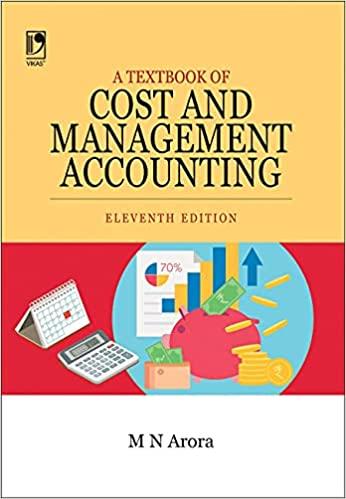Question
1. (L.O. 1) The currently maturing portion of long-term debt should be classified as a current liability if: A. the debt is to be converted
1. (L.O. 1) The currently maturing portion of long-term debt should be classified as a current liability if:
A. the debt is to be converted into capital stock.
B. the debt is to be refinanced on a long-term basis. C. the funds used to liquidate it are currently classified as a long-term investment on the balance sheet.
D. the portion so classified will be liquidated within one year using current assets
2 (L.O. 1) An enterprise is required to exclude a short-term obligation from current liabilities if it intends to refinance the obligation on a long-term basis.
A. the enterprise can demonstrate the ability to consummate the refinancing.
B. the obligation is not a part of normal operations.
C. it can demonstrate that a negative effect on working capital will result if it is not reclassified. D. the interest rate on the longterm obligation is not above the prime rate.
3. (L.O. 2) Which of the following would not constitute evidence concerning the ability to consummate the refinancing of a short-term obligation?
A. Actual refinancing after the balance sheet date by issuance of a long-term obligation.
B. A statement by the board of directors that refinancing is inevitable.
C. Entering into a financing agreement that clearly permits refinancing on a longterm basis with terms that are readily determinable.
D. Actual refinancing after the balance sheet date by issuance of equity securities.
4. (L.O. 2) Hegel Corporation has $1,500,000 of short- term debt it expects to retire with proceeds from the sale of 50,000 shares of common stock. If the stock is sold for $20 per share subsequent to the balance sheet date, but before the balance sheet is issued, what amount of short-term debt could be excluded from current liabilities?
A. $1,000,000.
B. $1,500,000.
C. $500,000.
D. $0.
5 (L.O. 2) If a short-term obligation is excluded from current liabilities because of refinancing, the footnote to the financial statements describing this event should include all of the following information except:
A. a general description of the financing arrangement.
B. the terms of the new obligation incurred or to be incurred.
C. the terms of any equity security issued or to be issued.
D. the number of financing institutions that refused to refinance the debt, if any.
6. (L.O. 3) A contingency is defined by the accounting profession as:
A. an existing condition, situation, or set of circumstances involving uncertainty as to possible gain or loss to an enterprise that will ultimately be resolved when one or more future events occur or fail to occur.
B. an existing condition, situation, or set of circumstances involving uncertainty as to a possible loss to an enterprise that will ultimately be resolved when one or more future events occur or fail to occur.
C. an event that will result in the requirement to record a liability if it can be shown that an asset is in danger of being lost to the enterprise and the company has no ability to avoid the loss.
D. an uncertain event that must have a reasonable chance of occurrence and the amount must be reasonably determinable by the company.
7 (L.O. 3) Which of the following loss contingencies is normally accrued?
A. Pending or threatened litigation.
B. General or unspecified business risk.
C. Obligations related to product warranties.
D. Risk of property loss due to fire.
Step by Step Solution
There are 3 Steps involved in it
Step: 1

Get Instant Access to Expert-Tailored Solutions
See step-by-step solutions with expert insights and AI powered tools for academic success
Step: 2

Step: 3

Ace Your Homework with AI
Get the answers you need in no time with our AI-driven, step-by-step assistance
Get Started


